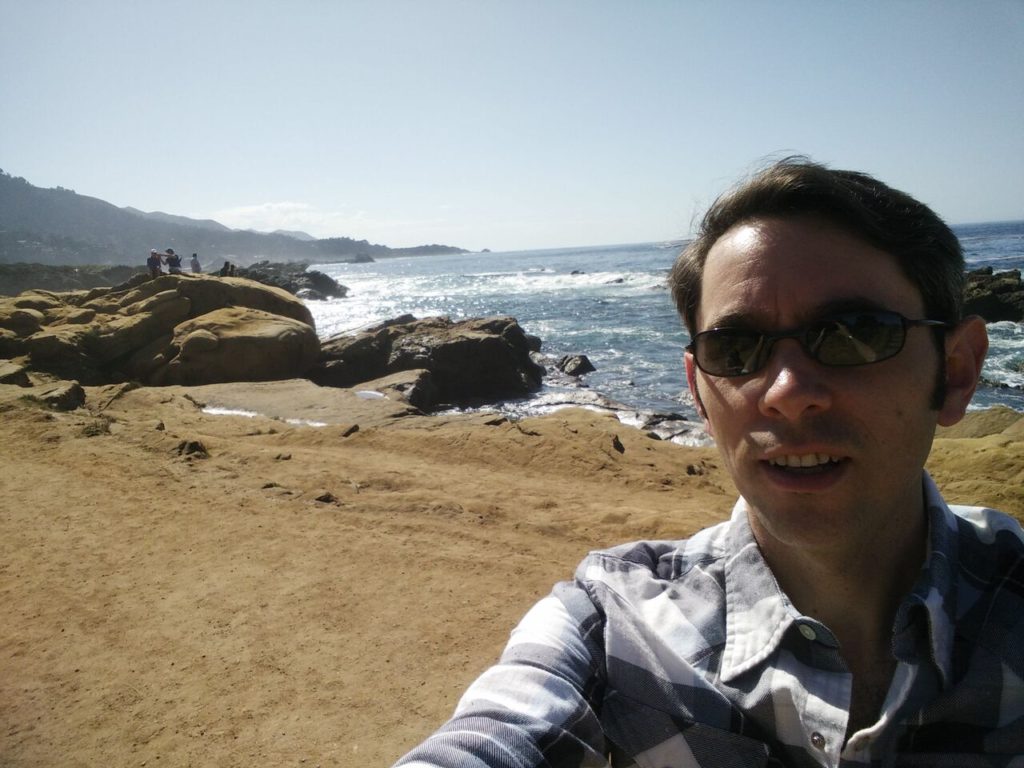Keynotes
There were three amazing and inspiring keynote talks, all very different from each other.
The first was given by Jennifer Golbeck (University of Maryland). While Jennifer did her PhD on the Semantic Web in the early days of social media and Linked Data, she now focuses on user privacy and consent. These are highly relevant topics to the Semantic Web community and something that we should really be considering when linking people’s personal data. While the consequences of linking scientific data might not be as scary, there are still ethical issues to consider if we do not get it right. Check out her TED talk for an abridged version of her keynote.
She also suggested that when reading a companies privacy policy, you should replace the word “privacy” with “consent” and see how it seems then.
The talk also struck an accord with the launch of the SOLID framework by Tim Berners-Lee. There was a good sales pitch of the SOLID framework from Ruben Verborgh in the afternoon of the Decentralising the Semantic Web Workshop.
The second was given by Natasha Noy (Google). Natasha talked about the challenges of being a researcher and engineering tools that support the community. Particularly where impact may only be detect 6 to 10 years down the line. She also highlighted that Linked Data is only a small fraction of the data in the world (the tip of the iceberg), and it is not appropriate to expect all data to become Linked Data.
Her most recent endeavour has been the Google Dataset Search Tool. This has been a major engineering and social endeavour; getting schema.org markup embedded on pages and building a specialist search tool on top of the indexed data. More details of the search framework are in this blog post. The current search interface is limited due to the availability of metadata; most sites only make title and description available. However, we can now start investigating how to return search results for datasets and what additional data might be of use. This for me is a really exciting area of work.
Later in the day I attended a talk on the LOD Atlas, another dataset search tool. While this gives a very detailed user interface, it is only designed for Linked Data researchers, not general users looking for a dataset.
The third keynote was given by Vanessa Evers (University of Twente, The Netherlands). This was in a completely different domain, social interactions with robots, but still raised plenty of questions for the community. For me the challenge was how to supply contextualised data.
Knowledge Graph Panel
The other big plenary event this year was the knowledge graph panel. The panel consisted of representatives from Microsoft, Facebook, eBay, Google, and IBM, all of whom were involved with the development of Knowledge Graphs within their organisation. A major concern for the Semantic Web community is that most of these panelists were not aware of our community or the results of our work. Another concern is that none of their systems use any of our results, although it sounds like several of them use something similar to RDF.
The main messages I took from the panel were
-
Scale and distribution were key
-
Source information is going to be noisy and challenging to extract value from
-
Metonymy is a major challenge
This final point connects with my work on contextualising data for the task of the user [1, 2] and has reinvigorated my interest in this research topic.
Final Thoughts
This was another great ISWC conference, although many familiar faces were missing.
There was a great and vibrant workshop programme. My paper [3] was presented during the Enabling Open Semantic Science workshop (SemSci 2018) and resulted in a good deal of discussion. There were also great keynotes at the workshop from Paul Groth (slides) and Yolanda Gil which I would recommend anyone to look over.
The conference banquet involved a walking dinner around the Monterey Bay Aquarium. This was a great idea as it allowed plenty of opportunities for conversations with a wide range of conference participants; far more than your standard banquet.
Here are some other takes on the conference:

[Bibtex]
@InProceedings{Gray2018:jupyter:SemSci2018,
abstract = {In recent years there has been a reproducibility crisis in science. Computational notebooks, such as Jupyter, have been touted as one solution to this problem. However, when executing analyses over live SPARQL endpoints, we get different answers depending upon when the analysis in the notebook was executed. In this paper, we identify some of the issues discovered in trying to develop a reproducible analysis over a collection of biomedical data sources and suggest some best practice to overcome these issues.},
author = {Alasdair J G Gray},
title = {Using a Jupyter Notebook to perform a reproducible scientific analysis over semantic web sources},
OPTcrossref = {},
OPTkey = {},
booktitle = {Enabling Open Semantic Science},
year = {2018},
OPTeditor = {},
OPTvolume = {},
OPTnumber = {},
OPTseries = {},
OPTpages = {},
month = oct,
address = {Monterey, California, USA},
OPTorganization = {},
OPTpublisher = {},
note = {Executable version: https://mybinder.org/v2/gh/AlasdairGray/SemSci2018/master?filepath=SemSci2018%20Publication.ipynb},
url = {http://ceur-ws.org/Vol-2184/paper-02/paper-02.html},
OPTannote = {}
}